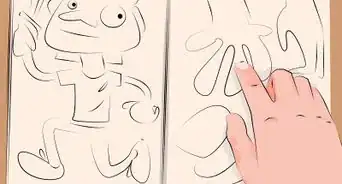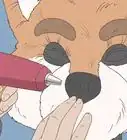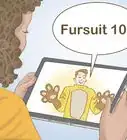This article was co-authored by wikiHow staff writer, Eric McClure. Eric McClure is an editing fellow at wikiHow where he has been editing, researching, and creating content since 2019. A former educator and poet, his work has appeared in Carcinogenic Poetry, Shot Glass Journal, Prairie Margins, and The Rusty Nail. His digital chapbook, The Internet, was also published in TL;DR Magazine. He was the winner of the Paul Carroll award for outstanding achievement in creative writing in 2014, and he was a featured reader at the Poetry Foundation’s Open Door Reading Series in 2015. Eric holds a BA in English from the University of Illinois at Chicago, and an MEd in secondary education from DePaul University.
There are 25 references cited in this article, which can be found at the bottom of the page.
This article has been viewed 62,794 times.
Learn more...
A fursuit is an animal costume worn by cosplayers and “furries,” who are fans of humanoid animal characters. Fursuits are typically made out of faux fur, and members of the fursuit community pride themselves on crafting complex, beautiful costumes. To make paws for your fursuit, get a faux fur fabric designed for fursuit crafting. Cut a template for your paw out of paper and trace it on your fabric. Cut 4 templates out and sew them together. Add paw pads to give your paws the classic fursuit look. Create feet paws using canvas shoes and EVA foam. Use the same fursuit fabric for the feet and hands to give your outfit a cohesive look.
Steps
Creating Hand Paws
-
1Choose a soft fursuit fabric for the exterior of your paws. You can make fursuit paws out of any fabric that you’d like, but your best bet is to buy faux fur designed specifically for fursuits. This fur tends to be easy to cut and comfortable to wear. Select a type of fabric based on the color of the fursuit that you’re designing. Buy your fabric online from a fursuit fabric manufacturer.[1]
- Most cosplayers and furries make the entire suit out of the same style of fabric and use 2-3 different colors. If you’re using more than 1 color, make your hand paws, feet paws, and belly the same color.
- Many people buy their fabric from community members on Etsy, but there are several larger fursuit manufacturers online.
- You need at least 3 by 3 feet (0.91 by 0.91 m) of fursuit fabric to create your paws. If you’re also making feet paws, double the amount of fursuit fabric that you buy.
- While some fursuit fabrics only have fur on one side, most fabrics are double-sided. You can always shave one side down with an electric hair clipper if you want. Fursuit fabric is designed to be easily shaved.
-
2Select a color of vinyl fabric for your paw pads. Vinyl fabric is tough, flexible, and easy to work with. This makes it ideal for paw pads. Purchase some vinyl fabric in the color that you want to make the paw pads. Typically, paw pads are black, white, or gray, but you can make them whatever color you’d like.[2]
- Get 2 by 2 feet (0.61 by 0.61 m) of vinyl fabric for the paws. You’re going to cut some odd shapes out of these sheets, so you need a decent amount of fabric.
- If you’re making feet paws, double the amount of vinyl fabric that you buy.
Advertisement -
3Draw a 4-fingered paw out on a piece of card stock. You can use standard paper if you’d like, but it can be kind of hard to trace. Card stock is much easier to work with. Place your hand on the paper and put your ring and middle finger together. Draw around your hands, adding at least 3–4 in (7.6–10.2 cm) around each finger. Draw your individual fingers to be roughly the same thickness so that your paw is symmetrical on each side. Make the wrist a little narrower if you want a tighter fitting paw.[3]
- The paws can be whatever shape you’d like, but round finger pads tend to be more common.
- The fingers don’t have to be perfectly symmetrical, but making each finger roughly the same size makes the process easier since you don’t need to track which side the paw pads go on.
Tip: Fursuits almost always have 4 fingers. You can put your ring fingers and middle finger together, or your pinky and ring finger. Do whatever feels comfortable to you.
-
4Cut the template for your paw out using standard scissors. Cut around the paw that you’ve drawn on the paper. Trim the excess paper off and work slowly around round edges to keep them as clean as possible.[4]
- If you find it really hard to cut around the finger pads, it will be even harder to cut the fabric out. Consider making a rounder design if you find it hard to cut the template out.
-
5Trace your paper template 4 times on the fabric. Take your paper template and set it down on top of your fursuit fabric. Use a fabric marker or fabric chalk to trace around your template. Repeat this process 4 times. Orient each tracing so that the paw is facing the same direction on the fur. This way, the fur will rest in the same direction on each side of the paw.[5]
- If the fur is really thick, brush it in its natural direction to smooth it down before tracing.
-
6Cut the fabric outline out using sewing scissors. Fursuit fabric is designed to be easy to cut. Lift the fabric up and cut around the 4 paws. Work slowly and rotate the fabric as you cut around round edges. Cut your way around the excess fabric and trim your paws to size.[6]
- You can use the scraps of your fabric for eyebrows, stripes, or as padding at the end of each finger when you’re done.
-
7Shave the excess fur off on one side if you’d like comfier paws. If you don’t want the paws to be really hot when you wear them, or you want the inside of your paws to be thinner, grab some electric hair clippers. Put a 1–2 in (2.5–5.1 cm) hair guard on it. Turn the clipper on. Drag the clipper over each paw in vertical lengths. Remove a layer of fur from 1 side of each of the 4 paws if you want the inside of your paws to be smoother and more comfortable.[7]
- When you put the paws together, make sure that the shaved sides are facing one another.
- Always trim the fur off by moving the clipper in same direction.
Tip: This step is completely optional. You can leave the fur inside of the paws if you prefer. The fur will make your paws warmer to wear, but if you plan on wearing the suit outside or you live in a colder climate, this may be preferable to you.
-
8Sew lining into the fabric if you want more comfortable gloves. If you want the inside of your gloves to be comfier, trace your template on a softer, separate fabric 4 times. Cut it out and use sewing pins to pin the fabric into 1 side of each paw. Use a sewing machine to sew the template into the fabric using a straight stitch.[8]
- When you sew the separate pieces of fabric together to make your paws, make sure that the sides with lining on them are facing one another.
- Alternatively, you can use hot glue to attach thick, woven gloves to the center of 2 of the paws.
-
9Pin 2 of the sheets of fabric together along the edges. Set 2 paw sides on top of one another so that the fingers and wrist are flush. Starting at a corner near the wrist, use sewing pins to join the 2 pieces of fabric together. Place your pins 1–2 in (2.5–5.1 cm) inside of the exterior edge and put 1 pin every 1–2 in (2.5–5.1 cm).[9]
- Even though you aren’t going to sew the wrist together, pinning it in place will help keep the fabric still while you sew.
-
10Use a sewing machine to stitch the 2 sheets together, leaving the wrist open. Run a strong stitching thread through your sewing machine. Starting at a corner near the wrist, place the paw under the needle. Plug the machine in and turn the knob or slide to set the machine to its lowest setting. Use the foot pedal or automatic setting to begin stitching the fabric together. Rotate the fabric under the needle to apply a straight stitch to the edge. Work your way around the paw and stop once you reach the wrist on the opposite side.[10]
- For a cleaner stitch, fold the edges on top of one another before stitching the sheets of fabric together.
- You can do this by hand if you prefer, but it will take some time to complete.
- If you want the fabric to look uniform, use a stitching thread that is the same color as your fabric.
-
11Repeat this process for the other paw. Complete these steps again to sew your second paw together. Set the fabric together and add sewing pins along the inside edge of each side. Sew the fabric together the same way that you did on the first paw.[11]
- Trim any excess fabric that is sticking outside of the stich using your sewing scissors. Alternatively, you can use hot glue to join the loose edges together.
-
12Draw a set of paw pads out on the vinyl fabric. Draw 4 oval-shaped pads for each of the finger tips. Draw one large, triangular pad with rounded edges for the center of the paw. Draw each shape so that it is smaller than the finger and palm where you plan on placing the pads. You can draw these shapes using a fabric marker or standard permanent marker. If the fabric is black, you may need to use white fabric chalk so that you can see the shape.[12]
- Alternatively, you can use a standard oval for the large pad in the middle of the hand. The shape of the paw pads are completely up to you.
- Generally speaking, the paw pads should small enough that there is 1 in (2.5 cm) of fur between the pad and the edge of the finger where you’re placing it.
-
13Cut the paw pads out using scissors. Hold the vinyl fabric in your nondominant hand. Use a pair of standard scissors to cut around the individual pads. Trim the excess vinyl off. Set your paw down and place the paw pads on top where you plan on installing them to make sure that the pieces are the proper size.[13]
- If the vinyl fabric is really thick, you may need to use sewing scissors instead. Vinyl fabric is typically pretty easy to cut, though.
-
14Trace the pads and repeat the process to make 2 sets of paw pads. Set each paw pad out on an uncut portion of your vinyl fabric. Use your fabric marker, fabric chalk, or permanent marker to trace each individual paw on the uncut sheet. Set your cut paws aside and use your scissors to cut the second set of paws out.[14]
- The paw pads should be the same side on each hand. Tracing the pads is the only way to determine that the pads are all the same size.
-
15Use hot glue to attach the pads to the paws. Put a hot glue stick into your glue gun and plug it in. Wait 1-2 minutes to give the gun time to heat up. Apply hot glue to the back of a paw pad and stick it into its corresponding finger. Smooth the pad out by hand and hold the pad in place for 20-30 seconds. Repeat this process for every other paw pad to finish your fursuit paws.[15]
- If your fur is really thick, shave the location where you’re going to install the paws before adding them.
- Alternatively, you can sew the pads into the paws. If you do, make sure that you don’t sew all the way through each finger and accidentally join them together.
Tip: You can use hot glue to stuff the finger tips and sides of the wrist with cotton batting or foam if you want the paw to have a fluffier shape.
Making Feet Paws
-
1Cut an outline for your feet paws out of EVA foam. Get a 3 by 3 feet (0.91 by 0.91 m) sheet of EVA foam online or from a craft supply store. Draw a 4-toed outline for your foot paw using a marker. Use a heavy-duty pair of scissors or utility knife to cut the template out. Once you’ve cut your first template out, hold the cut section of foam over another piece and trace it. Then, cut your second piece out the same way you cut the first piece out.[16]
- While your feet paws can be shaped however you’d like, most fur feet have round toes that lead back to the heel. Make the foam base at least 2–4 inches (5.1–10.2 cm) bigger than your shoe on each side, although they can be bigger if you’d like.
- You can use craft foam instead of EVA foam if you prefer, but craft foam tends to be a little softer and may not last as long.
- Like regular paws, fursuit feet paws typically have 4 digits. You can make a suit out of 5 or 3 toes if you prefer, though.
-
2Remove the laces from some canvas shoes. Get a comfortable pair of canvas shoes to create the frame for your paw feet. Remove the laces from the shoes and pull the tongue up a little so that you can easily slide your hand inside.[17]
- The shoes must be made of canvas fabric. Plastic and leather won’t stick to the foam you’ll use to pad the feet.
- To make fursuit feet paws without shoes, use thick, comfortable socks instead of shoes. It’s typically easier to use canvas shoes, though.
- It is extremely hard to make stable fursuit feet paws entirely from scratch without shoes or socks.
-
3Use hot glue to adhere each shoe to the center of the EVA foam. Put a glue stick inside of a hot glue gun and plug it in. Let it heat up for 3-5 minutes. Then, turn each shoe over so that the sole is facing up. Apply a liberal amount of hot glue over each portion of the sole. For each shoe, stick your hand inside and press it into the center of the EVA foam. Hold each shoe in place for 20-30 seconds before weighing them down with a heavy object.[18]
- Since your templates are identical, it doesn’t matter which shoe goes on which sheet of foam.
-
4Outline your feet paws on upholstery foam and cut them out. Get a sheet of upholstery foam online or from your local craft store. Hold one of your shoes on top of the foam and trace it with a marker. Then, use an electric knife to cut the padding out. Turn the knife to its lowest setting and hold the foam up with your nondominant hand. Slowly and carefully cut around your outline. Repeat this process for your second foot.[19]
- You need at least 3 by 3 feet (0.91 by 0.91 m) worth of upholstery foam to complete both feet.
- Use a bread knife or scissors if you don’t have an electric knife.
- Hold your nondominant hand at least 8–12 inches (20–30 cm) away from the area that you’re cutting to keep your hands safe.
- If your foam is kind of thin, repeat this process a second time and glue the 2 cut out portions together for each foot to double the thickness. The foam must be thicker than the height of your shoes for this process to work.
-
5Cut the padding in half for each of your feet paws in half. Hold the padding over your shoe and make a mark right where your foot goes into the shoe. Then, use the electric knife to cut each set of upholstery foam in half, widthwise, over the marks that you made. This will make it much easier to carve out space for your shoes.[20]
- Cutting the foam in half gives you room to cut into the middle of the padding without worrying about puncturing the top of the padding, which must remain intact.
-
6Carve out space for each shoe using your electric knife. Hold the padding flat on the ground next to your shoe’s heel. On the foam, mark the height of your heel. Then, use the electric knife to carve foam out of the middle of each portion so that your shoe fits inside. This is mostly a trial and error process, so cut small portions out and place the foam over your shoe to get a feel for how much you need to remove from each sheet of foam.[21]
- Keep in mind, the back half of each paw only needs to wrap around your heel. You’ll remove more foam from the front half of each paw.
- Cut out a small half circle where each pad sits over the opening of your shoe to give you room to put your feet inside.
- This doesn’t need to be perfect. Don’t worry if you remove a little excess foam.
-
7Use hot glue to attach the padding to the top of your shoes. Once you’ve removed enough foam to fit the padding to your foam, reheat your hot glue gun. Apply hot glue all around your EVA foam. The more glue you use, the more secure your feet paws will be. Once you’ve covered the EVA foam in glue, hold your upholstery foam over the EVA foam and press it down in place. Repeat this process for each shoe and glue your 4 pieces into place over your shoes.[22]
- Weigh each shoe down with a heavy, flat object for 3-5 minutes to join the 4 pieces of upholstery foam the EVA foam.
- Don’t add glue to the outside of the canvas shoe when you do this. You need a little breathing room for your feet.
-
8Shape the individual toes using your knife and scissors. To give your fursuit toes some shape, use your electric knife to trim each toe and make it round. Use scissors to smooth down rough edges. Do your best to keep each toe roughly the same in terms of its roundness and size. Continue trimming the toes until you’re happy with their shape.[23]
- You can leave the heel as it is if you’d like. Alternatively, feel free to smooth the top out to make the heel lead up towards your leg.
- There is no right or wrong shape for the toes. Feel free to cut them however you’d like!
-
9Pin and glue the sides where the 2 pads meet on each foot. Over time, the seam where the EVA and upholstery foam meet may begin to peel. To avoid this, run glue around the seam on each foot. To keep the seam in place while you glue, join the upholstery foam to the EVA foam using sewing pins. Place 1 pin every 3–4 inches (7.6–10.2 cm) in the space between each set of pins. Run a line of hot glue over the seam where the EVA foam meets the upholstery foam and remove the pins.[24]
- Alternate the direction of every other pin. In other words, if your first pin goes through the top of the foot, place your second pin through the bottom of your foot.
-
10Cut out strips of fursuit fabric for your feet paws. Since your feet paws are kind of oddly shaped, it is extremely difficult to sew a single sheet of fur over the padding. Instead, cut out 5-8 smaller shapes for each of your feet using scissors. Cut 1 rectangular portion out to wrap around your heel and 1 rectangular portion for the top of your foot. Cut 1-2 smaller portions out for each toe. Once you’ve cut out your fabric, hold each portion over your foot to ensure that you have cut out enough fur.[25]
- You do not need to add fabric to the sole of each foot.
- It’s perfectly fine if the sheets of fursuit fabric overlap.
- If you have any gaps or openings between the sheets of fabric, cut additional pieces out.
-
11Sew vinyl fabric into 1 side of each piece of fabric. Shave the down on the back of each portion of fursuit fabric using an electric hair clipper. Trace each piece of fursuit fabric on the vinyl fabric and cut the vinyl out with sewing scissors. Use your sewing machine to sew the vinyl into the fursuit fabric. Use a straight stich and work slowly to join fabrics together.[26]
- The vinyl fabric will make it easier to glue to the fursuit fabric to the foam. Without the vinyl fabric, your fursuit fabric may peel off over time.
- You can use sewing pins if you want to make it easier, but it isn’t necessary if you have a steady hand. This portion of the fabric will be hidden, and you really only need the vinyl to glue the fabric to the foam.
-
12Use hot glue to adhere the fursuit fabric to the feet paws. With the vinyl attached, apply hot glue over the upholstery foam for your first foot. Cover every surface and use multiple glue sticks as needed. Press your individual sheets of fursuit fabric into the foam, vinyl-side down. Hold each piece in place for 20-30 seconds. Cover the foam in fur and repeat this process for your other foot to finish your fursuit paws! [27]
- The fluffy fursuit fabric will make it easy to hide any gaps in the upholstery foam if there are any.
- You can always cut out new pieces and layer them over the gaps if you’d like.
Community Q&A
-
QuestionHow would you cut the toes with scissors
 Tianna SchwindelCommunity AnswerTo cut the toe shape, you can outline with a marker then carve them down using scissors. you just cut off small bits of foam at a time until you have the desired shape you want.
Tianna SchwindelCommunity AnswerTo cut the toe shape, you can outline with a marker then carve them down using scissors. you just cut off small bits of foam at a time until you have the desired shape you want. -
QuestionHow will the paws stay on your hands and work like they are hands?
 Tianna SchwindelCommunity AnswerThe hand paws work sort of like large gloves, so they will stay on your hands as long as you are not taking them off. They allow you to move your fingers easily, just like you would if you were wearing a glove.
Tianna SchwindelCommunity AnswerThe hand paws work sort of like large gloves, so they will stay on your hands as long as you are not taking them off. They allow you to move your fingers easily, just like you would if you were wearing a glove. -
QuestionCan I use normal glue for my fursuit or do I need a glue gun to do it?
 Tianna SchwindelCommunity AnswerA glue gun will be your best bet, as it dries firm and is very hard to remove from the foam. Normal glue will just seep into the foam, and then the fur will not adhere.
Tianna SchwindelCommunity AnswerA glue gun will be your best bet, as it dries firm and is very hard to remove from the foam. Normal glue will just seep into the foam, and then the fur will not adhere.
Things You’ll Need
- Fursuit fabric
- Cardstock
- Marker
- Fabric marker or chalk
- Sewing scissors
- Scissors
- Stitching thread
- Vinyl fabric
- Sewing machine
- Sewing pins
- Glue gun
- Hot glue
- EVA foam
- Canvas shoes
- Upholstery foam
- Electric knife
- Hair clipper (optional)
- Fabric lining (optional)
References
- ↑ https://youtu.be/gOwJ6FhcR9o?t=310
- ↑ https://youtu.be/1E0HYdLHGkA?t=11
- ↑ https://youtu.be/x6yYytDshjw?t=6
- ↑ https://youtu.be/x6yYytDshjw?t=6
- ↑ https://youtu.be/1E0HYdLHGkA?t=62
- ↑ https://youtu.be/x6yYytDshjw?t=16
- ↑ https://youtu.be/x6yYytDshjw?t=95
- ↑ https://youtu.be/1E0HYdLHGkA?t=308
- ↑ https://www.threadsmagazine.com/2012/01/30/how-to-use-pins-the-right-way
- ↑ https://youtu.be/x6yYytDshjw?t=256
- ↑ https://youtu.be/x6yYytDshjw?t=256
- ↑ https://youtu.be/1E0HYdLHGkA?t=168
- ↑ https://youtu.be/1E0HYdLHGkA?t=186
- ↑ https://youtu.be/x6yYytDshjw?t=163
- ↑ https://youtu.be/eOEgMjtj1mI?t=763
- ↑ https://youtu.be/1wkM9aF3p20?t=13
- ↑ https://youtu.be/1wkM9aF3p20?t=27
- ↑ https://youtu.be/1wkM9aF3p20?t=34
- ↑ https://youtu.be/1wkM9aF3p20?t=42
- ↑ https://youtu.be/1wkM9aF3p20?t=54
- ↑ https://youtu.be/1wkM9aF3p20?t=85
- ↑ https://youtu.be/1wkM9aF3p20?t=90
- ↑ https://youtu.be/1wkM9aF3p20?t=116
- ↑ https://youtu.be/1wkM9aF3p20?t=197
- ↑ https://youtu.be/1wkM9aF3p20?t=334
- ↑ https://youtu.be/1wkM9aF3p20?t=428
- ↑ https://youtu.be/1wkM9aF3p20?t=474
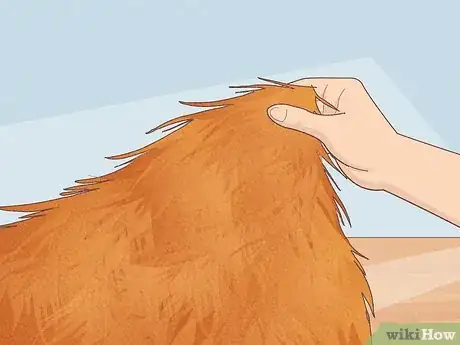

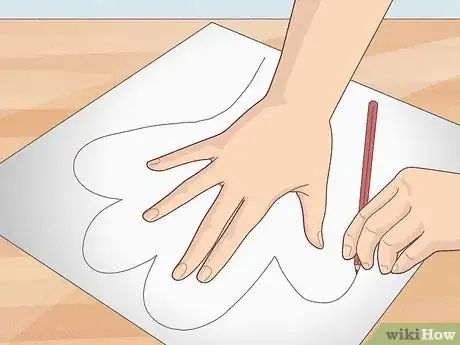
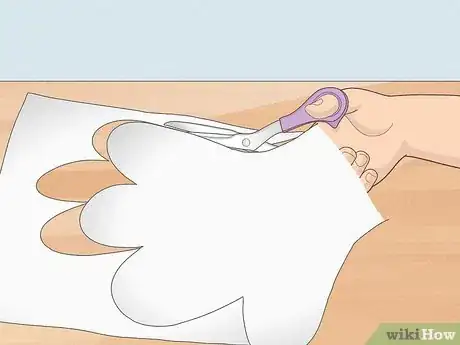
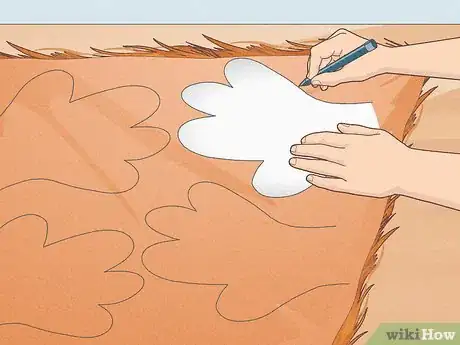
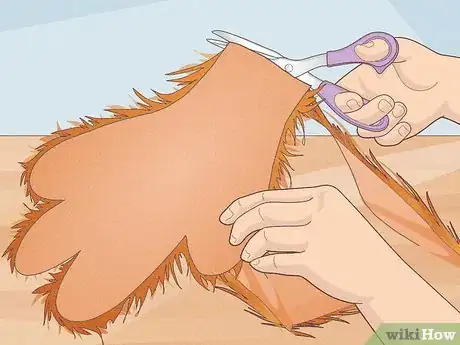

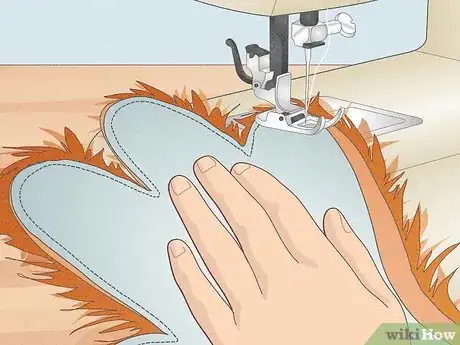
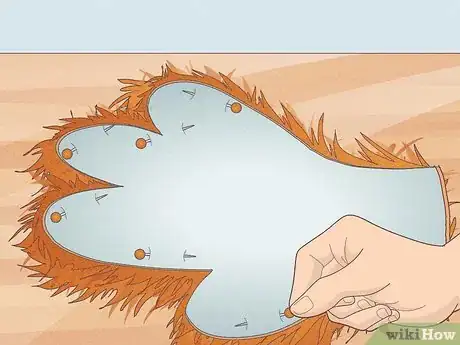
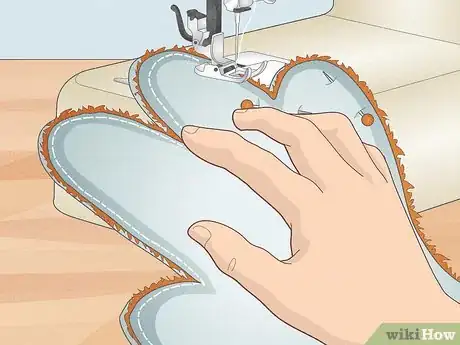
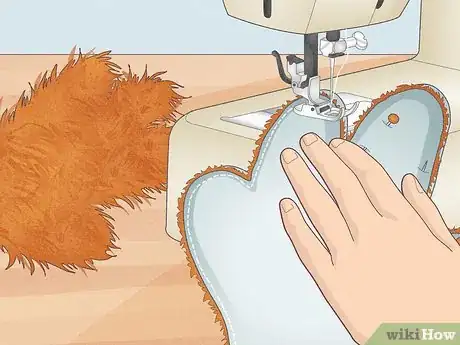
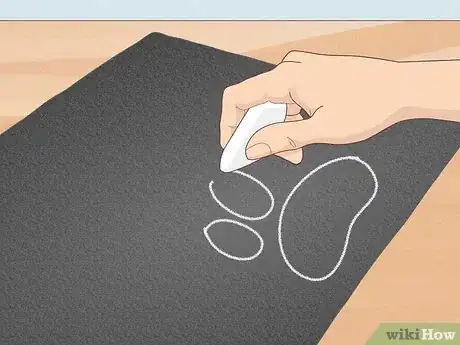
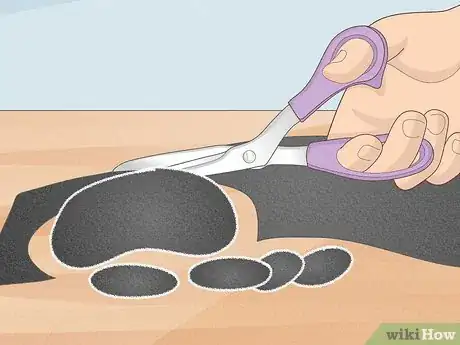

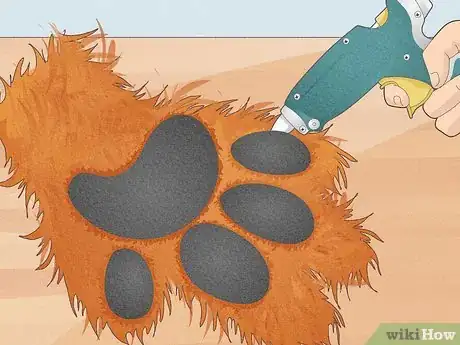
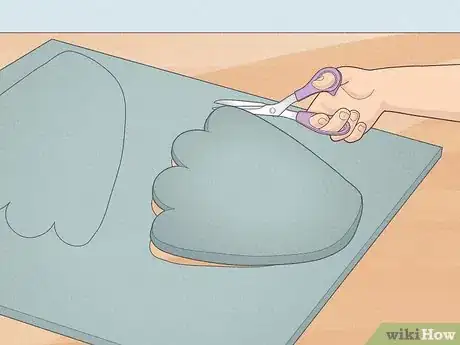
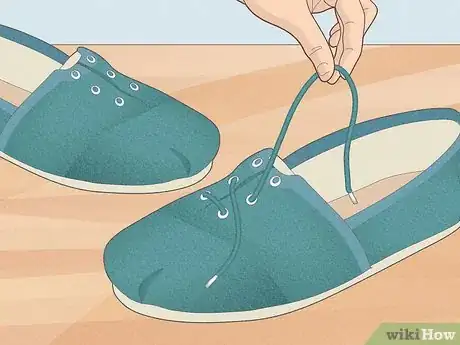
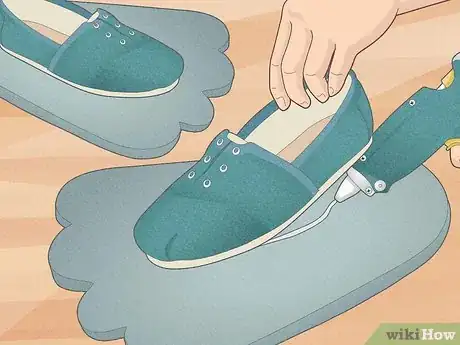

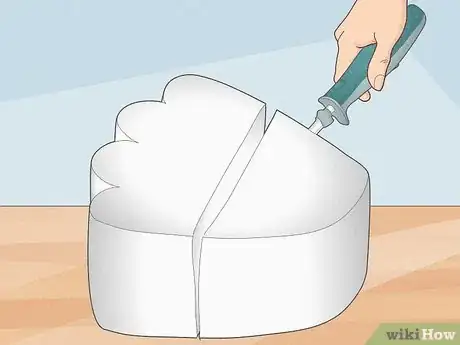
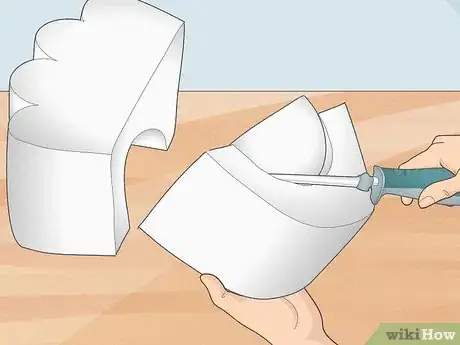
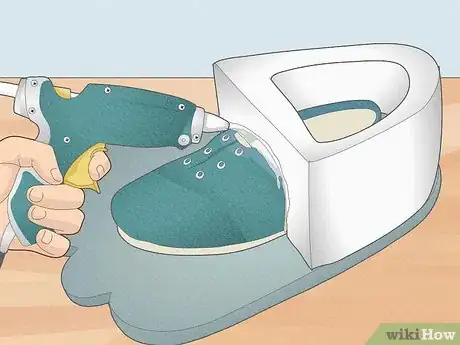
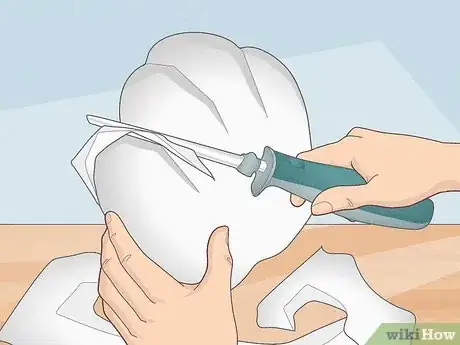
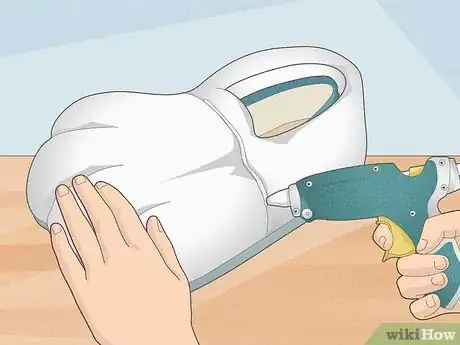
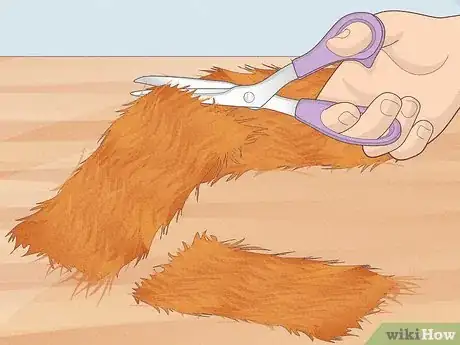
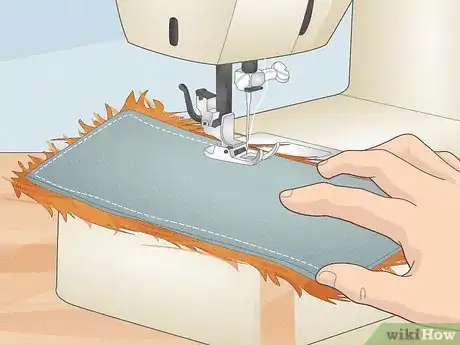
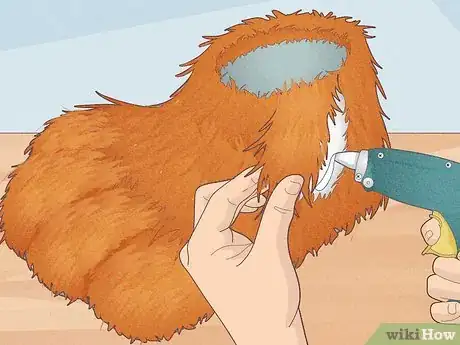
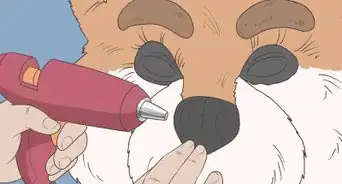


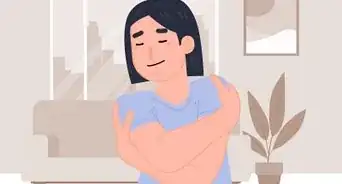








-Step-15.webp)
